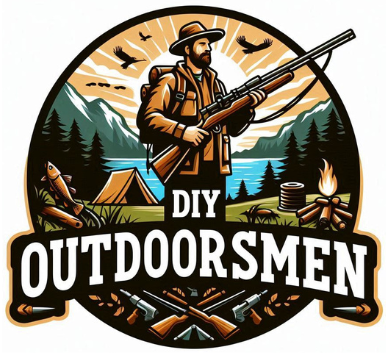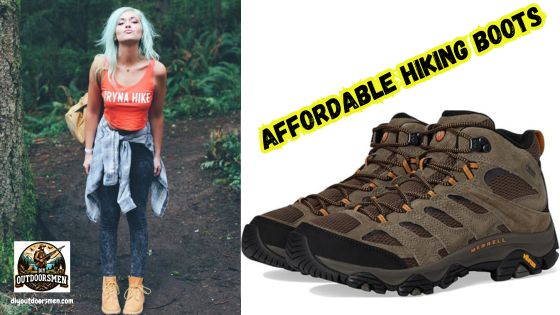Contents
- 1 Why Affordable Hiking Boots Matter for Casual Hikers
- 2 Key Features to Look For in Affordable Hiking Boots
- 3 How to Get the Best Fit Without Overspending
- 4 Shopping Smart: Where to Find Deals and Reliable Brands
- 5 Common Issues with Budget Hiking Boots and How to Avoid Them
- 6 How Affordable Hiking Boots Fit Into My Hiking Routine
- 7 Frequently Asked Questions About Affordable Hiking Boots
- 8 Extra Tips for Getting the Most from Your Budget Boots
Affordable hiking boots are a game-changer for anyone wanting to spend more time outdoors without making a huge investment. When I picked my first pair, I quickly learned that the right boots add comfort, boost confidence, and open the door to hiking trails I once avoided.
QUICK LOOK: Important Features for Affordable Hiking Boots
- Comfort and Fit: A good hiking boot feels snug but not tight, with enough space to wiggle my toes. This reduces the chance of blisters or hot spots when the trail gets rocky or the climb continues longer than expected.
- Support: A sturdy midsole and ankle support make a real difference on uneven terrain. Even for short hikes, a little extra support helps with stability, especially if carrying water or a light backpack.
- Traction: I make sure the outsole grip is suitable for dirt, light mud, and gravel. A deep tread or lug pattern helps reduce slips on wet ground.
- Breathability: Breathable mesh panels let heat escape, so I’m less likely to get sweaty feet on warm days. This feature really pays off on longer walks during the spring and summer.
- Water Resistance: Basic water resistance is helpful in case of puddles or light rain. Full waterproofing usually adds cost, but plenty of affordable models feature water repellent materials or coatings.
- Weight: Lighter boots are less tiring, especially for beginners. Affordable models tend to use lightweight synthetic fabrics, making each step easier over a few miles.
For casual hikers or those just starting, finding affordable boots isn’t about sacrificing quality, but about knowing what features matter most for day hikes or neighborhood trails.
Why Affordable Hiking Boots Matter for Casual Hikers
Hiking doesn’t always require expensive gear to be enjoyable. I’ve seen many beginners hesitate to get into hiking due to beliefs that it needs a big upfront cost. The reality is, many great options meet the needs of casual hikers for under $100.
Most day hikes or easy weekend trips don’t demand premium technical boots, often recommended for advanced mountain trails. Instead, focus on comfort, support, and practicality. The hiking gear market has grown a lot in the last decade, and more brands offer quality boots at budget prices.
Outdoor retailers even conduct in-house durability and comfort tests, so shoppers don’t have to guess which models hold up on the trail. According to the Outdoor Industry Association, day hiking continues to be among the most popular outdoor activities, and affordability remains a top priority for newcomers.
Recognizing the features that truly impact comfort and safety helps casual hikers make solid choices. You don’t need to buy into marketing hype to find boots that protect your feet and help you enjoy the outdoors.
Key Features to Look For in Affordable Hiking Boots
When I shop for budget hiking boots, I break down my choices based on what I value most during a hike: comfort, support, and traction. Here are the features I consider essential:
- Comfort and Fit: A good hiking boot feels snug but not tight, with enough space to wiggle my toes. This reduces the chance of blisters or hot spots when the trail gets rocky or the climb continues longer than expected.
- Support: A sturdy midsole and ankle support make a real difference on uneven terrain. Even for short hikes, a little extra support helps with stability, especially if carrying water or a light backpack.
- Traction: I make sure the outsole grip is suitable for dirt, light mud, and gravel. A deep tread or lug pattern helps reduce slips on wet ground.
- Breathability: Breathable mesh panels let heat escape, so I’m less likely to get sweaty feet on warm days. This feature really pays off on longer walks during the spring and summer.
- Water Resistance: Basic water resistance is helpful in case of puddles or light rain. Full waterproofing usually adds cost, but plenty of affordable models feature water repellent materials or coatings.
- Weight: Lighter boots are less tiring, especially for beginners. Affordable models tend to use lightweight synthetic fabrics, making each step easier over a few miles.
Other small touches, such as padded tongues or cushioned heel collars, can give a boost to comfort during longer adventures. Consider reflective details for better visibility if you hike at dusk or early morning, especially in wooded areas. Trying out different lacing techniques can also change the way your boots feel and fit, improving both support and comfort.
How to Get the Best Fit Without Overspending
One of my best tips for finding well-fitting hiking boots is to always try them on at the end of the day. Feet swell after walking or standing for hours, so this is when your foot size will be closest to its maximum. Bringing along the socks I usually hike in also helps me check the real-world fit.
Most outdoor stores have knowledgeable staff who understand local terrain and can suggest models that fit your hiking goals. Big box stores also offer budget-friendly boots, but selection and expertise vary. I’ve had success checking for wider toe boxes or half sizes online when in-store options feel tight.
Measuring my feet with a Brannock device (the sliding tool in most shoe stores) has also helped. Even a small difference in shoe size can cause discomfort, so checking both feet is worth the effort.
It’s smart to wiggle your toes and walk around the store when you’re trying on boots, checking for any pinch points or slipping at the heel. Boots that feel comfortable now are more likely to stay comfortable as you rack up the miles. Remember to break in your boots gradually—more on that below.
Shopping Smart: Where to Find Deals and Reliable Brands
Shopping strategically saved me a lot on my first pair of boots. I watch for sales at major outdoor retailers, especially during the offseason or holiday weekends. Signing up for store email lists sometimes gets me extra coupons or alerts to flash sales.
I read online reviews from other hikers who’ve tested boots on similar terrain. Sites like REI, Backcountry, or even Amazon include candid feedback about sizing or durability. I also check hiking forums for recommendations, as many hikers are quick to share their opinions on affordable brands like Merrell, Columbia, or Quechua.
Buying gently used boots is another path I’ve tried. Thrift stores, consignment shops, or online resale sites often have boots with minimal wear at much lower prices. It’s super important to inspect for cracks in the sole or worn-down tread to avoid painful surprises later.
You can also expand your search to include local community groups, social media marketplace pages, or online outdoor gear swaps. These sources can help you stumble upon nearly new boots or older high-quality models for an even friendlier price. Always ask about return policies if you’re unsure about the fit or comfort, especially when buying online.
Common Issues with Budget Hiking Boots and How to Avoid Them
With affordable options, I’ve noticed a few potential pitfalls, but most can be managed by knowing what to check:
- Durability: Lighter materials sometimes mean a lower lifespan. I avoid boots with obviously flimsy seams or thin soles. Reinforced toecaps or double stitching go a long way.
- Limited water resistance: Some budget boots aren’t fully waterproof, so I treat them with a weatherproofing spray before hiking in really wet conditions.
- Arch support: Inexpensive boots might skimp on arch support. Adding my insoles, cut to size, has made even bargain boots feel much more supportive. Many specialty footbeds are available at reasonable prices at most outdoor shops.
- Break-in period: Some boots take longer to mold to my feet. I always wear new boots around the house or on short city walks before committing to a full-day hike.
Sometimes budget boots have laces that wear out prematurely or deliver less cushion than expected underfoot. Replacing the laces with stronger ones or adding an extra liner sock can help improve durability and comfort. It’s easier to spot issues early if you give your boots a once-over after each adventure and store them properly, letting them air out and dry away from direct heat or sunlight prolongs their life.
Comfort Tips for Breaking in New Boots
Even the best affordable boots need a gradual break-in. On my first few outings, I stick to easy, local trails and bring along supplies like bandages or blister pads, just in case. Wearing hiking socks made from merino wool or synthetic blends helps manage moisture and reduces the chance of rubbing and blisters.
If you sense a potential hot spot developing during a walk, stop and adjust your socks or laces to prevent blisters before they start. Switching up your walking route or trail difficulty during the break-in process makes the adjustment period more comfortable.
Try wearing the boots indoors and during everyday chores to soften the materials and cut down on the risk of discomfort later. This practice saves both your time and your feet in the long run.
How Affordable Hiking Boots Fit Into My Hiking Routine
For casual hikes, weekend walks, and exploring city parks, I rely on lightweight, breathable boots that don’t slow me down. Lower-cut hiking shoes also work well for these outings, providing good traction without ankle bulk. When I take on rocky paths or steeper terrain, high-cut budget boots offer the right balance of ankle support and durability without feeling heavy.
Quick-drying boots come in handy after crossing shallow streams or walking through dewy grass. I’ve learned to pair my boots with moisture-wicking socks and to loosen the laces when stopping for breaks to let my feet breathe. This combination keeps my feet comfortable for hours without fatigue or hot spots.
Hiking with friends, family, or community groups also motivates me to care for my boots regularly so they last multiple seasons. Sharing recommendations and favorite finds with others helps everyone save money and track down hidden gems that might otherwise go unnoticed.
Frequently Asked Questions About Affordable Hiking Boots
How much should I expect to spend on a good pair of beginner hiking boots?
Most quality entry-level hiking boots are available in the $50$120 range. Promotions, store brands, and seasonal clearances can drop prices further.
Are affordable hiking boots good enough for rugged mountain hikes?
For basic trails and light scrambles, affordable boots are usually fine. More technical terrain or multiday trips might require investing in midrange or premium boots with advanced waterproofing and tougher materials.
What’s the best way to clean and care for budget hiking boots?
I remove loose dirt with a brush and rinse boots with lukewarm water after muddy hikes. Drying them away from direct heat improves lifespan. Using waterproof sprays helps maintain water resistance even after cleaning.
Can I use running shoes or sneakers instead of hiking boots?
For flat or well-maintained trails, running shoes can work if they have decent tread and fit well. However, dedicated hiking boots or shoes provide more grip and support, which helps on varied terrain.
Extra Tips for Getting the Most from Your Budget Boots
Adding a few simple habits to my pre-hike routine keeps my boots comfortable and lasts longer. I make a habit of checking for wear before and after each trip. Replacing insoles once they flatten out or upgrading laces increases comfort and avoids unexpected problems on the trail. Cleaning boots after a muddy hike stops grit from wearing down the material.
Keeping your boots in a cool, dry spot when you’re not using them also prevents premature cracking or stiffness. If your boots get soaked, stuffing them with newspaper overnight will help draw out moisture and keep them from smelling musty. Rotating between two pairs, if possible, allows each set time to recover and dry fully.
Finding affordable hiking boots that fit right makes a big difference in how enjoyable hiking becomes. With a little research and practical shopping, it’s easy to find boots that help build confidence outdoors, without putting pressure on my wallet. Whether you’re new to the trails or a seasoned walker looking for a fresh deal, these boots can be your gateway to countless outdoor adventures.
Most Recent Articles:
- 14 Tips And Tactics For Public Land Mule Deer Hunting

- 6 Features of Waterproof Ground Blinds For Wet-condition Elk Hunting

- 4 of the Best DIY Elk Hunting Areas In Colorado

- 8 Tips for Choosing the Best DIY Elk Hunting States

- 5 Hunting Gear Packing List Essentials For DIY Trips

- 7 Tips For Hunting The Elk Migration

As always, stay safe, enjoy the journey, and please try to leave it cleaner than you found it. If you have any comments, questions, ideas, or suggestions, please leave them in the comment section below, and I’ll get back to you ASAP. You can follow us on YouTube: Man Art Creations for videos of our DIY Adventures.
P.S. Thanks so much for checking out our blog; we really appreciate it. Just so you know, we may receive a commission if you click on some of the links that appear on our site. This helps us keep our content free and up-to-date for everyone. We appreciate your support!



